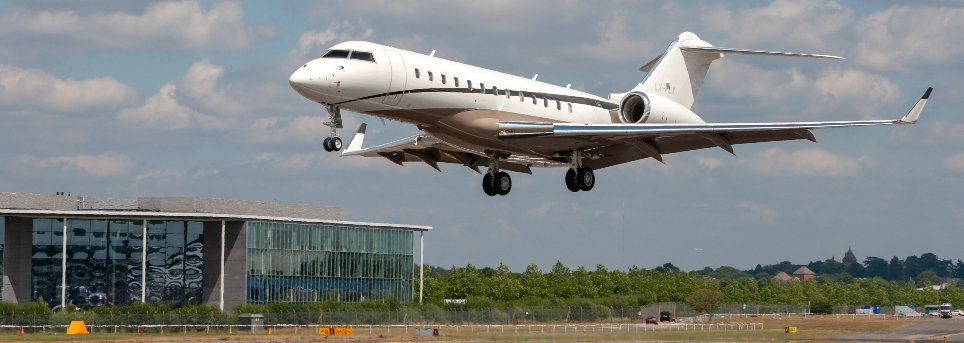The challenge
Farnborough Airport, Europe’s leading business aviation airport, faced the crucial challenge of understanding its future operational capacity and infrastructure in the face of anticipated growth. With a base of 30,000 annual aircraft movements (ATMs), the airport needed a clear, data-driven strategy to assess how increasing traffic, would impact its existing runway, aircraft stands, hangar capacity and screening facilities. Key questions revolved around identifying potential bottlenecks, determining the optimal timing for infrastructure development and ensuring that service excellence could be maintained as demand increased. The airport required a robust analysis to make informed decisions about future investments and operational adjustments.
The solution
Farnborough Airport through GeblerTooth Architects engaged AiQ Consulting to undertake a comprehensive “Schedule Forecast and Runway Capacity” study. The collaborative solution involved:
Baseline Calibration and Data-Driven Modelling: A detailed operational model was calibrated using previous flight movement data. This was supplemented by analysis of peak week profiles to capture variations in demand.
Developing Future Growth Scenarios: Multiple growth scenarios were developed by the team, effectively doubling annual movements, allowing for a phased understanding of capacity impacts. These scenarios were used to model potential peak day profiles, carefully adjusting for typical morning departure and evening arrival patterns to stress-test capacity.
Comprehensive Capacity Analysis:
Runway Capacity: A detailed methodology was applied to assess theoretical and practical runway capacity, considering the existing aircraft mix, NATS wake vortex separation standards, and operational constraints such as ILS approach procedures. This defined a realistic peak hour movement capability.
Aircraft Mix and Parking Demand: The analysis differentiated aircraft by Maximum Take-Off Weight (MTOW) for runway considerations and by wingspan for hangar parking. It forecasted demand for both transient (short-term) and static (longer-term, including home-based) aircraft parking across aprons and hangars, linking incremental hangar demand to overall movement growth.
Stand Utilisation: The study also assessed the demand for security screening stands under different movement scenarios, factoring in aircraft types and assumed processing times.
Infrastructure Adequacy Assessment: The forecasted demand for runway slots, apron stands, and hangar spaces across all growth scenarios was systematically compared against the airport’s current infrastructure capacity, highlighting areas for future consideration.
Throughout the process, key assumptions regarding operating hours, aircraft mix, arrival/departure splits and the ratio of transient to home-based aircraft were clearly defined and applied consistently.
The benefits
- Informed Strategic Planning
- Data-Driven Investment Decisions
- Optimised Operational Understanding
- Enhanced Future-Proofing
- Clear Roadmap for Growth
The comprehensive analysis provided Farnborough Airport with critical, data-driven insights, empowering strategic decision-making:
- Informed Strategic Planning: The airport gained a clear, quantitative understanding of its existing infrastructure capabilities and the precise impact of different growth scenarios on its runway, stands and hangars.
- Data-Driven Investment Decisions: The study identified potential future bottlenecks and quantified the demand for additional capacity, enabling Farnborough Airport to make well-informed, timely decisions regarding capital expenditure and infrastructure development.
- Optimised Operational Understanding: The detailed breakdown of peak hour profiles, aircraft mix and parking demand (static vs. transient) provided valuable insights for optimising day-to-day operations and resource allocation as traffic grows.
- Enhanced Future-Proofing: By understanding the limits and capabilities under different demand levels, the airport is better equipped to proactively plan for future challenges and ensure sustained operational efficiency and service quality.
- Clear Roadmap for Growth: The findings serve as a robust foundation for Farnborough Airport’s long-term development strategy, supporting its ambition to accommodate increased demand while maintaining its status as a premier business aviation hub and continuing to provide the exceptional service levels for which it is renowned.
Our operational and analytical experts are dedicated to analysing, modelling and optimising every aspect of an airport. Specialising in airport capacity, we are trusted to realise capacity and solve complex operational challenges. For more information about how we can assist you with any of your challenges in 2025 and beyond, contact us today.

